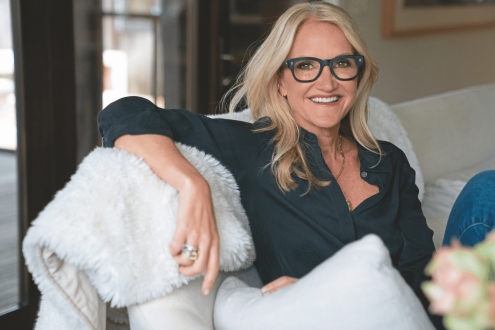Let tradition be your guide
When you ache for those loved and lost, or feel something is missing in your life, centuries-old habits can root you to your past and bring you comfort, writes Vee Sey

In my recurring nightmare, I am not being chased by murderous thugs or standing nude as a Rubens in front of strangers… rather, I develop knobbly-jointed arthritis in my oversized ‘man hands’ (thanks to the friend who made that observation) and cannot knit.
I am not a creator of intricate cables, nor do I do it for mindful meditation (which it is), or to induce a state of psychological flow (which it does). When I clack my needles together, I can feel my mother beside me, like when I was a little girl. I do it because, even after all these years, I yearn for her, and knitting delivers her to me instantly, emotionally and sensuously: The reassuring warmth of her, the mothering scent of her, the familiar image of her skilful fingers laced through her wool.
I have been knitting with more passion than talent since the age of five, wedged between Mum and Granny on the sofa, three generations of women in a production line of tradition. We drank tea that I slopped on my multicoloured blanket squares and dunked copious sugary biscuits that made for squeaky needles – and I felt a primal sense of belonging as I eavesdropped on the secret women’s talk of the knitting circle. These were my women. I am from them and of them, and we knit.
When I dropped a stitch mid-row, or the needles fell clean out of my work because my tension was so slack, Mum would patiently pick them up for me while Granny tut-tutted because my scarf was more hole than fabric. Granny’s wartime patterns caused much embarrassment to us as children. She insisted on winter helmets – just shy of a balaclava, I tell you – to banish both cold and dignity. But what I would give to have those garments now, family artefacts richly imbued with memories and care.
I have foisted similar sartorial shame on my children, drawers full of heat rash-inducing jerseys overflowing with love but short on cool while they were young and powerless over what they would wear. I miss the days before they had such strong opinions.
The customs of our tribe bring a sense of identity and remind us of our heritage, which has become more important to me as I have matured – for now I am the matriarch, a role I have yet to grow into in my head.
Many of us have left our extended families, communities and cultural practices behind us. Nowadays, my ancestors call to me and ask when I am coming home… But, of course, I am home. Many of us cannot visit graves or meaningful places from our childhood, but we can keep our traditions alive and create new ones for this lifetime and beyond. We can knit, we can cook family recipes and sing the songs of our kinfolk. I know I sound like an advert for a hippy-dippy festival in a waterlogged field, but there’s a reason they are popular. History. Affinity. Roots. We must remember our roots, even if we cannot deepen our connection with the soil of our origin in person.
I am protective of my knitter’s identity, mocked as she is for being a singleton or a hausfrau with no interest in the sophisticated world of, dare I say it, men. Historically, they were the knitters, first of fishing nets and then clothing for trade. But when knitting frames were invented and men could not compete with their speed, the chaps cast off; my guess is they did not like a contest they could not win – but they missed the point.
While my daughter prefers to cross-stitch The Simpsons characters, and we sit nattering as she does so, my heart nearly burst with joy when my son declared that he was taking up knitting. He was not inspired by his nostalgic mother’s adoration of the craft, it was Tom Daley during the Olympics, but I’ll take it, because it’s a family tradition – and he’s excellent at secret women’s talk.
Words: @veejanesey
Photograph: Getty Images









